Top 10 Hosting in US


The Importance Of A Good Website Hosting Service
A significant issue when creating a website is making sure that the site’s administration is adequate. It is, after all, one of the most important parts of the overall project, as it makes content visible for everyone to see. Well-built websites use functionality like facilitating to ensure text and images will automatically load when a user accesses the site from any location. All in all, facilitating produces an obvious and comprehensive viewing experience for your visitors.


- Web Hosting for a full year is only $1.67/month
- Ultra-fast UK server response times
- 30-day money-back guarantee!


- Monthly hosting starts at $2.95
- Easy to use, no matter what your skill set
- Care For: 24/7 Customer Support


- Introductory offer$2.75/mo*
- Excellent service is offered through 24/7 customer support
- 45-day money-back guarantee


- Monthly hosting cost is $2.65
- 125+ Free One-Click Install Applications.
- 24/7 network security
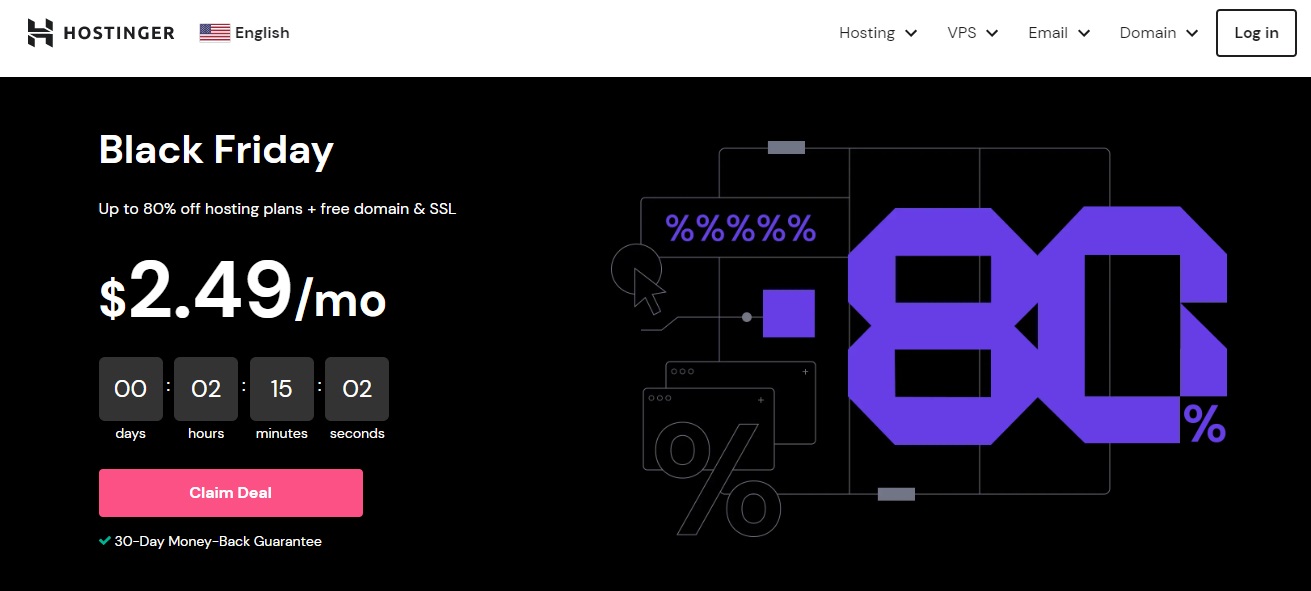

Fast loading time – 307 milliseconds
Because good load times positively affect user experience, increasing page speed is a key part of any website design strategy. Have you ever tried to open a web page only to get stuck waiting for it to load for what seems like ages? We’ve all experienced this. Hostinger boasts servers in the USA, Asia, and Europe (the UK). Each is also reportedly connected to a 1000 Mbps connection. High-speed connections ensure that each client’s experience is consistently quick and reliable.Good Uptime 99.97%
Our SSL certificate has an impressive 99.97% uptime and is always ready to help. Websites that are highly available will increase trust in the company and improve revenue. When it comes to a hosting service, you want one that has incredibly high uptime. That’s why Hostinger delivers over 99.97% uptime with just 2 hours of downtime on average over 6 months.Multilingual Customer Support
Now that more and more web hosts are handling customer support, making sure a quick response goes a long way. Hostinger doesn’t disappoint customers with their customer support team, live chat, and their integration of Intercom. The company is only accessible to users logged into an account when they offer live chat though. We’re glad they offer live chat, but it would make more sense if they offered it to all users.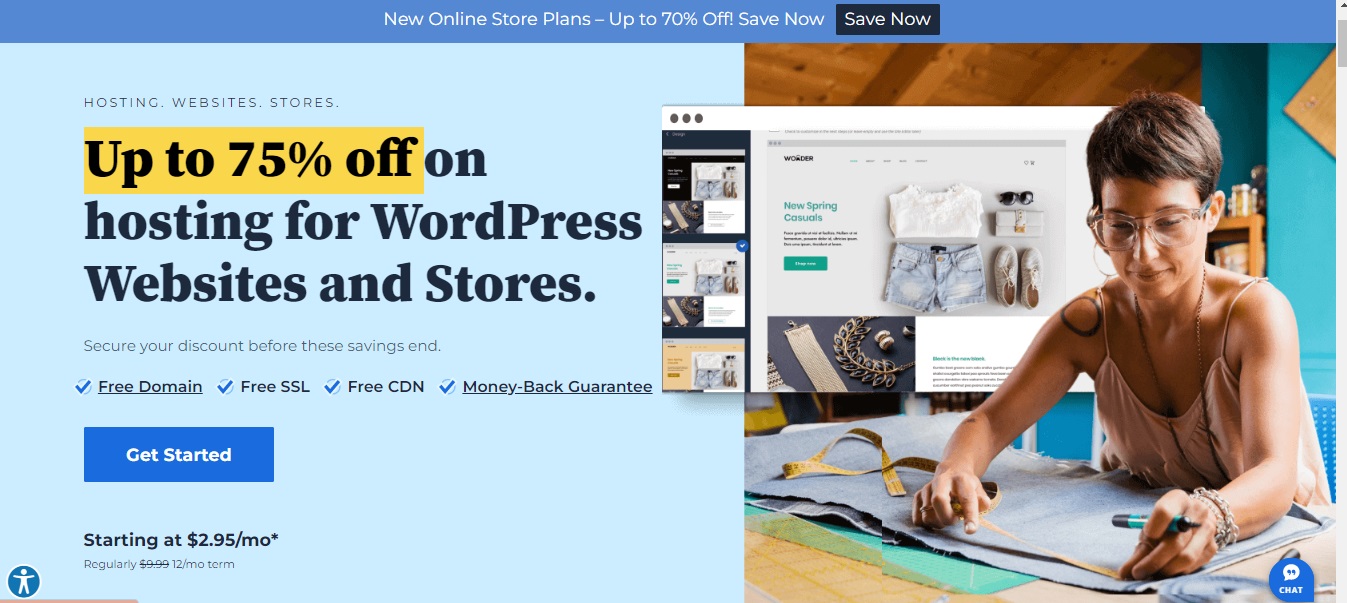

Good Uptime (99.98%)
When looking for a web host, one of the most important factors is how consistent their uptime is. After reviewing numerous web hosts, our benchmark for “good” uptime is less than 99.93%. That’s why ideally, we don’t want to see anything lower than that.
Loading Speed (420 ms)
As page load time increases, the probability of your visitors leaving your site goes up exponentially. And it only gets worse with longer page load times. Furthermore, Google is more geared towards mobile-first indexing. This means that you need to optimize for mobile users or else you’re losing users to other websites.
Low Introductory Pricing ($2.95/mo)
One-time only, Unlimited revisions. Customers that sign up at the discounted price can expect unlimited revisions on their completed project. The introductory price for Bluehost includes two sites, so keep the best deal for your blog or website.
This is a great value at this price point, as it includes 10 GB SSD storage, unmetered bandwidth, free SSL certificates and more. So you’re getting solid value for your money, plus their consistent uptime and speed.
Packed with Security Options and Features
Bluehost is one of the cheaper options on the market. With that said, they don’t cut too many corners on their critical security features and options, so our users can feel safe and confident when they sign up here. Their cheapest plan includes a free SSL certificate, and they even give you access to great features like the Cloudflare CDN, multiple CMS integrations, and plenty of eCommerce plugins.
24/7 Customer Support
For those that need 24/7 customer support, Bluehost has live chat and phone support. They also have a vast knowledge base packed with answers to common questions and useful information. With our help, we tested out the live chat function and were ultimately satisfied with how well it handled our query.
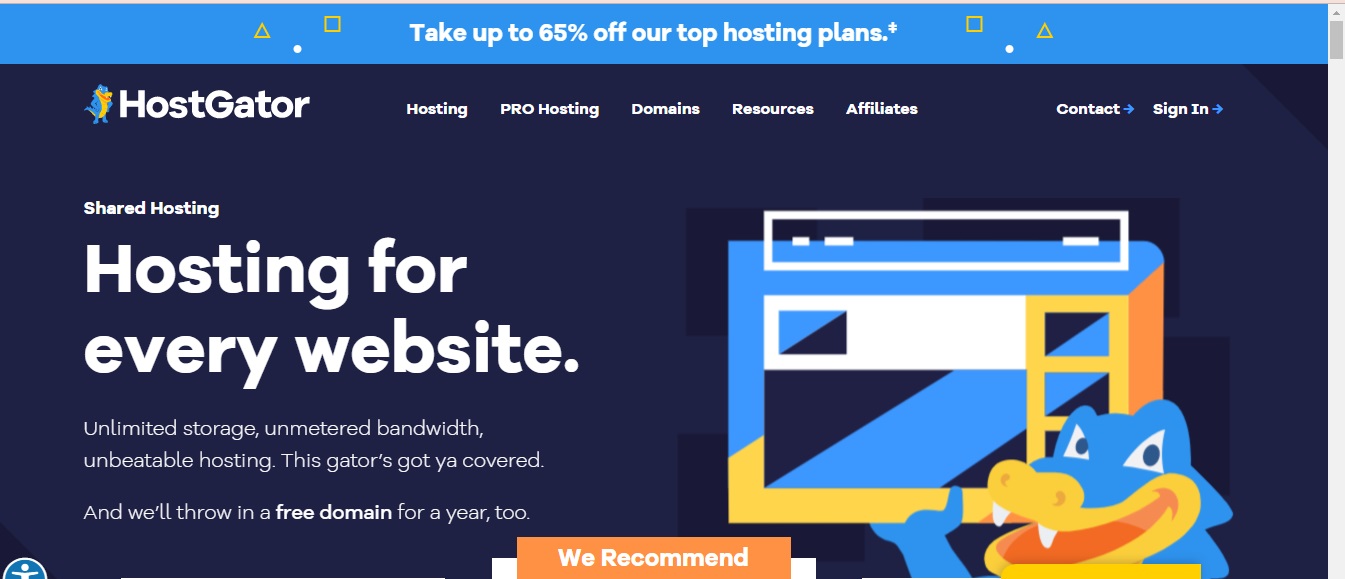

Ease of Use
Our friendly and customer-friendly design is what makes our service super easy to use. HostGator is the best site out there for beginners who are looking to set up a new website. They provide multiple tutorials, walkthroughs, and more to help you navigate the murky world of DNS and data centers. They also have extra features like IP Manager that make setting up your site as easy as possible without having to hire others to do it for you.
Customer Support
With HostGator, you can get fast live chat help with knowledgeable reps available to assist you 24/7. To make getting your questions answered even more convenient, we also have a knowledge base and phone support just in case.
Page Load Speed
In order to improve our conversion rates and serve our visitors better, we need to have a fast loading website. And HostGator delivers. Its average page load time is 688 milliseconds, and they’ve been consistently improving the page speed tool. Not long ago, our site took more than a second to load.
Uptime
HostGator has posted an average of 99.85% uptime over their past six months, with less than six hours of downtime, which is below industry standard. Another good thing is that they offer an uptime guarantee which says if the hosting company misses their percentage count by less than 0.1%, you can receive one month of credit to your account.
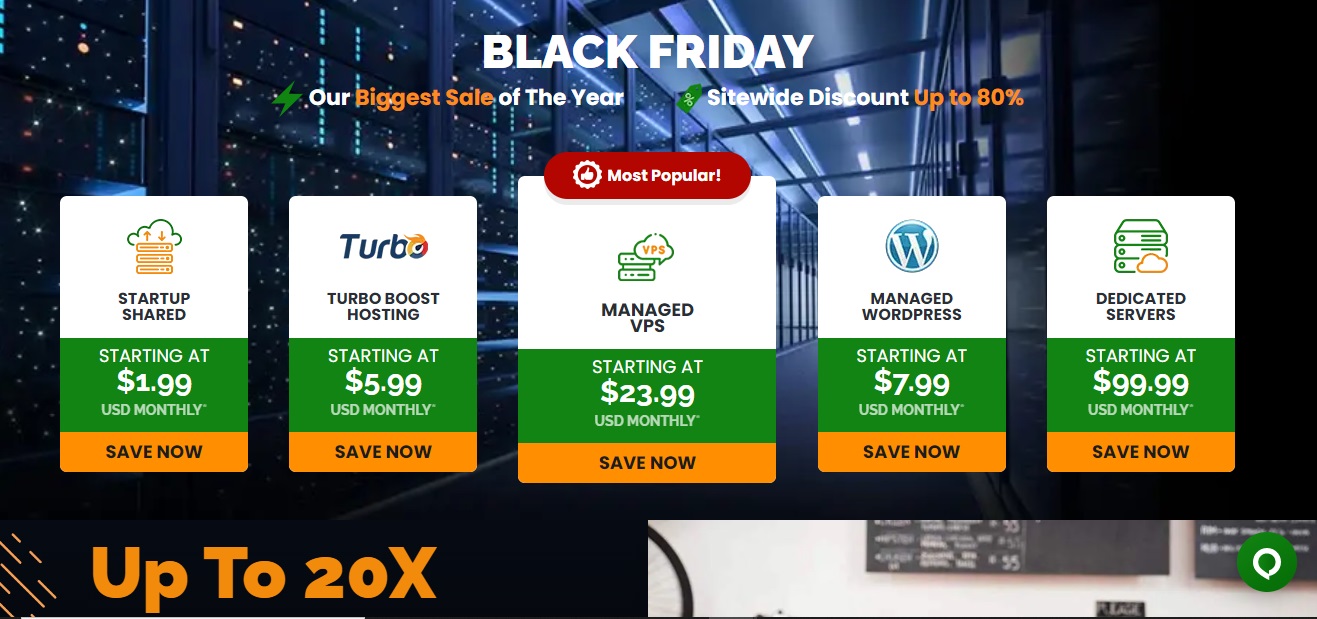

Specification:
- This site is super-fast loading (286 milliseconds)
- Our cost per month is $2.99
- Our website’s uptime is 99.99%, meaning we’re constantly working to ensure that your website remains online .
- Green Web Hosting: the best way to estimate your website’s yearly server use
- We know that our customers are always important to us. That’s why we’ve made sure to create an intuitive, easy-to-use support portal.
- We offer fast and helpful customer support and a live chat only available if you have an active ticket open with our support team
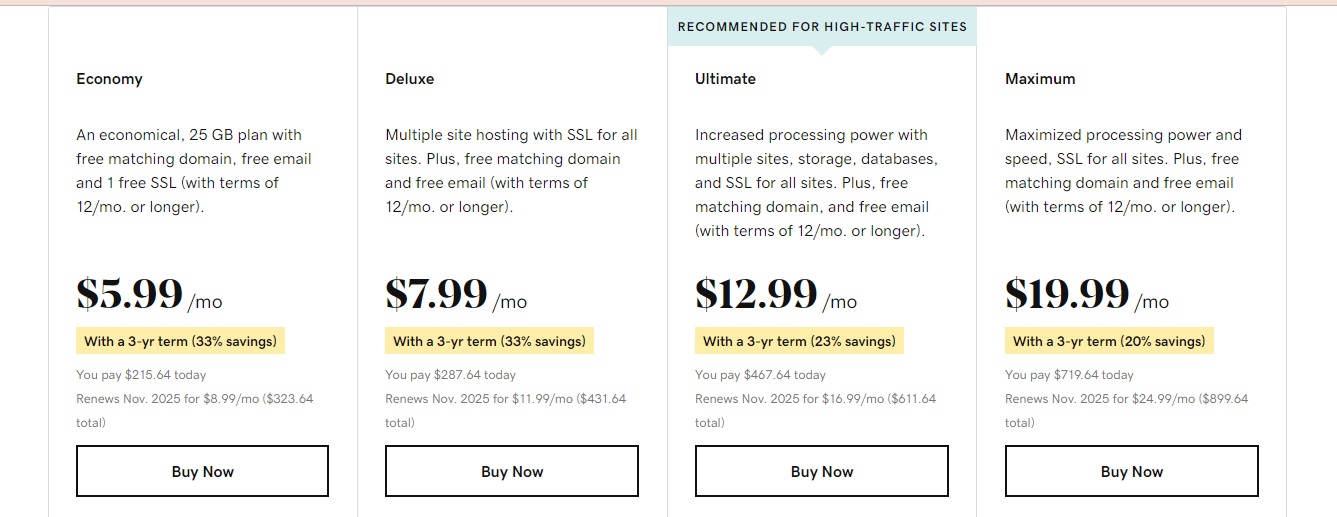

Great Page Load Time at 280 ms
Some of the best web hosts usually aren’t the most expensive, especially when you consider that for less than $4 per website per month, you can get a world-class hosting provider like GoDaddy.
Basic Cheap Plan is Good Value
A good value is found in our Basic Cheap Plan, which offers everything you need to look like a pro. We initially found GoDaddy to be lacking. They started out with a very expensive shared hosting plan and very limited features. Now, in 2018, they’ve made a 180-degree turn. Their current Economy plan prices only $2.99 for the first month with a 12-month contract.
Good Uptime at 99.98%
GoDaddy only offers an average uptime of 99.98% on their shared hosting plans. This means that you’ll be able to access your site for about an hour and a half per year, which is not too bad. Overall, they have low downtime, so it may be worth looking into hosting with them!
Customer Support
In order to optimize your customer experience, we have developed a number of tools that will make it easy for you to handle your customers and fulfill orders. One feature that we’ll always be happy to see at GoDaddy is 24/7/365 support. We’ve seen them offer live chats, great international phone support, and a decent knowledge base. So, to test out their live chat support, we asked them a few basic questions about site backups.
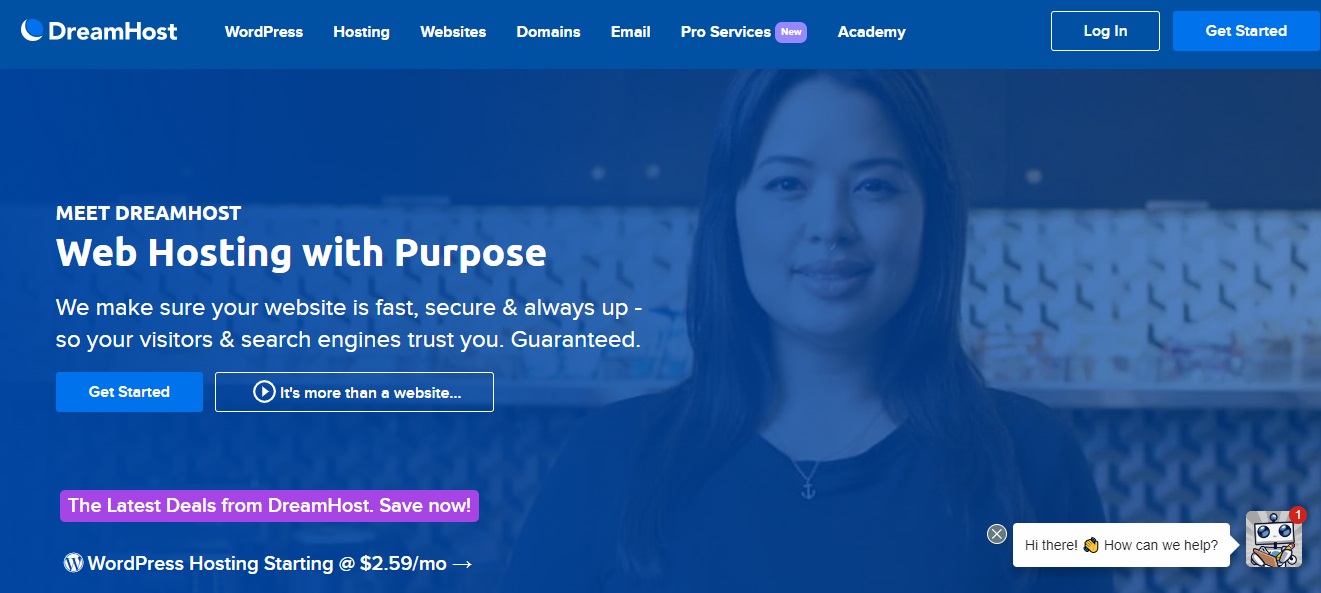

Average Speed (1730 ms)
Loading time is one of the most important factors when choosing a host. Not only does page speed affect visitor bounce rate but slow loading time can also affect your overall SEO (not to mention Google rank). This, however, calculates lost profit. So needless to say, the faster your website loads the better. Unfortunately, DreamHost’s 1730 ms average loading time over the past 6 months hasn’t been good. It puts them in the lower half of the hosts we’ve tested.
Average Uptime (99.77%)
DreamHost’s 6-month average uptime is also nothing to brag about – 99.77% with more than 10 hours of downtime. That’s bad and could potentially mean lost website visitor traffic and profit for you. However, the good news is that DreamHost has an uptime guarantee. Like other hosts, if your monthly average falls beneath that threshold, you’ll get a credit for the cost of the service. DreamHost, though, guarantees 100% uptime in their Terms of Service. Keep in mind that scheduled maintenance or user errors aren’t covered in this guarantee.
Month-to-Month Hosting
The vast majority of all 40+ web hosts we’ve reviewed will give you a 30-day refund period. That gives you a full month to test out their services before risking your prepaid amount. A few hosts, like HostGator, will give you 45 days.And then there’s DreamHost. Their money-back guarantee is good for up to 97 days. That’s over a full three months to really make sure you’re happy.
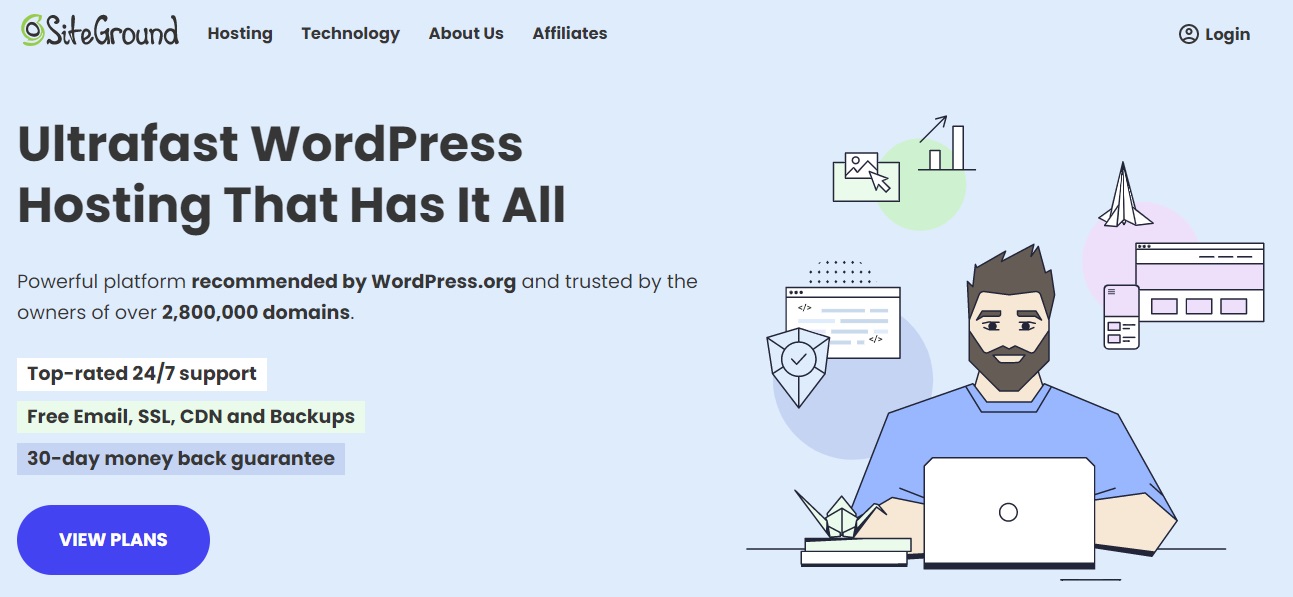

Good Performance
SiteGround’s uptime performance has been nearly perfect over the last six months. Their 99.99% average puts them among the most reliable hosts we’ve reviewed. Strong uptime like this keeps website visitors happy. But more importantly, it means your site is almost guaranteed to be working around the clock so you won’t miss out when your customers want to make a purchase, either.
Average Load Time (356 ms)
Site speed is easily the second most critical factor when choosing a host. For starters, research by Google shows that 53% of people will leave your site if your page doesn’t load within three seconds. Furthermore, you can’t do much to fix a slow host. You might be able to compress images to lighten their weight. You might be able to load them through a CDN to take some pressure off your server.
Good Customer Support Experience
SiteGround provides a knowledge base for customers to find their own quick answers. Otherwise, you can call in over the phone or use the 24/7 live chat. For this latest test, we opted for the live chat option and we connected with their customer rep in less than a minute.Unlike some other hosts, there was no noticeable delay in answers. So it seemed like he knew what he was talking about and didn’t have to look up answers each time we sent over a new question.


Reliable Uptime Performance
GreenGeeks didn’t disappoint in this area. They delivered an average uptime of 99.93% during the 6-month testing period. Throughout the whole half a year their uptime was between 99.96% and 100%, except in August when the uptime was only 99.66%.
Good Page Loading Time (478 ms)
Another important factor to look for when choosing a host is their server speed. Why? There’s a 32% probability of a site’s bounce rate increasing if it takes one to three seconds to load a website. In short, the longer your page takes to load, the more likely visitors will leave. And that’s just one of the ways how speed can affect your website. Once again, GreenGeeks didn’t let us down. Their speed is better than the industry average, clocking in at around 478 ms.
Good Support with Quick Answers
Customer support is another “big element” of the review. We tested out GreenGeeks’ live chat and were connected to a customer support agent within a minute, who then answered questions quickly and concisely.
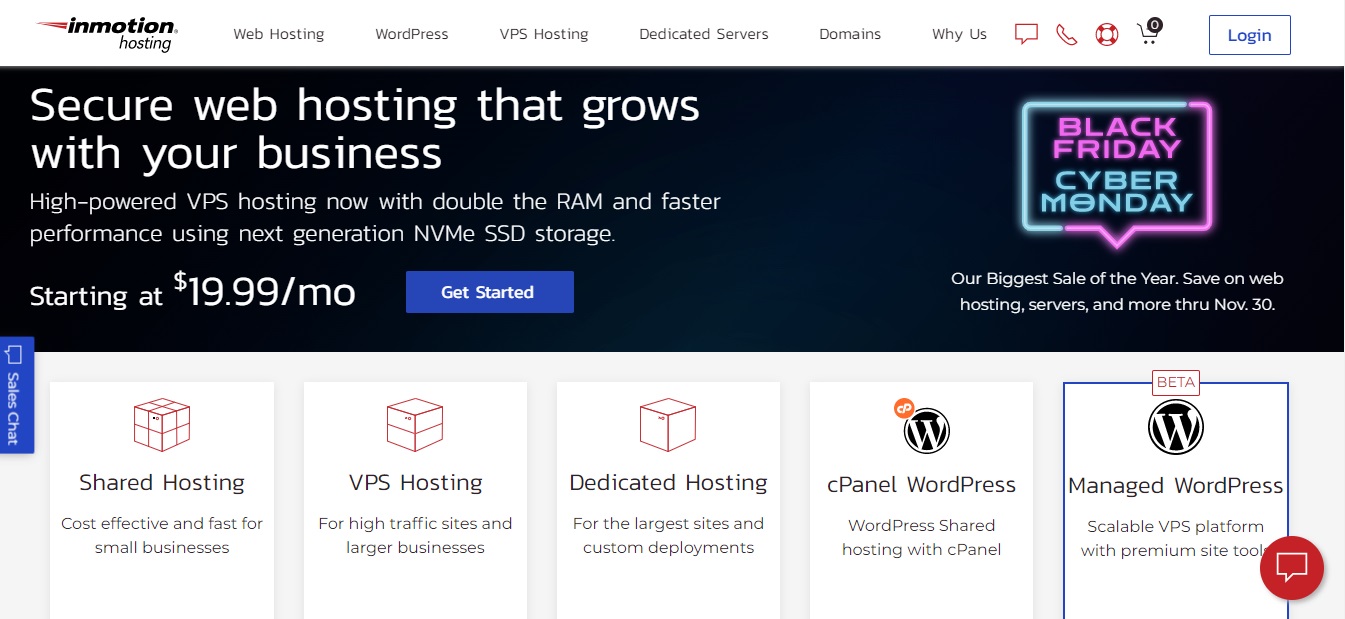

Good Speed 311 ms
Fast loading times aren’t just great for user experience. Speed is also factored into Google’s algorithm for dictating where in the rankings you’ll show up (you know – the whole SEO thing). How fast your page loads has one of the biggest impacts on your bottom line, forcing half your traffic to bounce if it doesn’t load within two seconds.
Great Average Uptime of 99.97%
InMotion Hosting’s average uptime clocked in at 99.97% with an hour and 20 minutes of downtime based on our careful tracking and monitoring over the last 6 months.This is a nearly perfect result and if it wasn’t for May’s poor uptime, InMotion’s performance would have fluctuated between 99.97% and 100%.
Customer Support
InMotion Hosting has a variety of support options to choose from: live chat, phone, email, and even Skype. We tested out their live chat option. We asked a few simple questions about their shared hosting plans and the customer rep connected within a few minutes. The replies were a bit delayed and concise, but still good enough to keep our attention and not go looking elsewhere for answers.


Strong Uptime – 99.97%
One of the most important metrics that we measure when it comes to hosting providers is uptime. You’re paying to have your website online. If uptime is lacking and your site is routinely going down, then your hosting service has failed you in its most crucial area.
Loading Speed 713 ms
A slow site isn’t just annoying: when a page takes too long to load, many of your potential visitors will already look elsewhere. Why is that? Site performance is a big deal when Google examines your site. Your all-important SEO score, which determines your placement on the world’s most popular search engine, relies heavily on it.
Improved User Interface
IONOS doesn’t use the classical cPanel, instead, they have developed their own custom backend. For those who are used to the cPanel, it may be confusing and take some time to get used to in the beginning, but overall, it’s rather easy to use.
FAQ’s
- Shared Hosting
- Virtual Private Servers (VPS) Hosting
- Dedicated Hosting
- Cloud Hosting
Modern technology makes it harder and harder for businesses to stay competitive. Companies rely on secure and reliable networks that protect the privacy of their employees and clients. You don’t want any chance of losing these customers, which is why you need to make your enterprise as safe as possible with a team that commits itself to finding every security flaw imaginable.
Shared hosting services are the perfect option for people who have a website. With these services, you can have everything you need to manage your website, but with a whole lot less money and effort on your part. People who use shared hosting services enjoy more control of their websites and overall options due to the small price tag in combination with big features.
Virtual Private Servers (VPS) are a new and innovative way to use your server resources. They’re also perfect for hosting applications with heavy traffic or services that require a lot of features.
Before taking on a hosting plan, you need to get a full overview of your company’s future plans. This will help you decide not just the industry and size of the website that your site needs to be, but also what’s required to make it successful in the long-term. Before settling on a plan and putting down upfront cash for it, it’s important to consider your company’s budget.
For small businesses, shared web website hosting may be the best option. However, if you’re an eCommerce shop or working with a company that needs dedicated resources, VPS web hosting could offer you better performance and support.
Breaking down every net web hosting provider’s pricing model can make things a bit confusing. You’ll need to know what exactly you’re paying for in order to get the best value out of your contract, but once that expires, costs quickly skyrocket. As a business owner, it’s important to be aware of your long-term financial commitments. Make certain you’re ensuring your business renews at the lowest possible rate. Your multiplied expenses may also impact your finances if they are not managed properly during the renewal process.
Our team at Dedicated Hosting is passionate about having the best, most reliable hosting services in the industry. We offer all the standard hosting options plus an “as-needed” or DIY plan.
Hosting a website isn’t always so easy. It can be tough to determine what your hosting company’s support services are like and whether or not they meet your needs. As a result, it’s important to read through their guide modes (chat, email, phone, subscription-based system) and the associated Service Level Agreement (SLA) that comes with their service.
Have 24/7 customer handles available. It’s always good to know that the support team is around and ready to help you with any problem, no matter what time it is. Even if you’re on the other side of the world, make sure that your support team can be reached 365 days a year.






